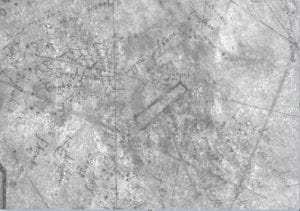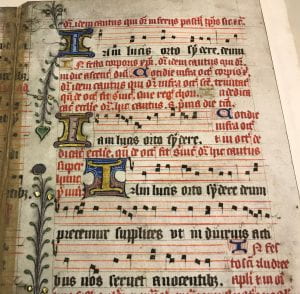
One of the most disappointing aspects of coronavirus restrictions for a small group of students and staff at the University of Lincoln has been the postponement of our participation in the Undergraduate Research Opportunities Scheme (UROS). UROS has been running since 2016, and offers undergraduate students and members of staff a unique opportunity to collaborate on a summer research project. The application is written jointly by students and supervising members of staff, and successful applicants are given a grant to fund their research, which takes place over the summer.
Early in 2020, the Special Collections Librarian (Claire Arrand) and the Academic Subject Librarian for music (Hope Williard), collaborated with two undergraduate students, Megan Lomas and Valerie Arindra, to prepare the first ever UROS application put forward by the library. In her role of looking after the manuscripts of Lincoln Cathedral library, Claire had noticed the manuscript collections contained a significant amount of printed music and music manuscripts, which was incompletely catalogued and thus very difficult for performers, scholars, and students to access and use.
Together we made a plan to change this. Our project, ‘Distant Music: Uncovering the Music of Lincoln Cathedral Library’, involves investigation into Lincoln Cathedral’s incompletely catalogued manuscript and printed sacred music. Much is known about William Byrd, the outstanding English composer of his time and his surviving material held in the Wren Library but other Lincoln Cathedral composers have never been documented. Historic printed music is obviously valuable but the manuscript collection may reveal hidden treasures.
Our aim is to describe what is in the collection and make it publicly available via the UK and Ireland database of music collections, Cecilia, which is a catalogue of music collections found in libraries, museums, and archives, created by the International Association of Music Librarians in 1999. The Cathedral music collection ranges in date from the 1590s to the 1970s but the lists are not digitized. Uultimately, we hope that greater knowledge of the collection will make it more accessible and result in music being studied and played, which has not been heard for hundreds of years.
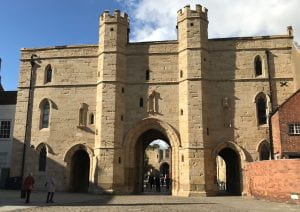
Coronavirus posed an unexpected challenge for the project. Megan and Valerie were due to prepare a collection-level description of the early music collections of Lincoln Cathedral Library, to potentially open-up the collection to other students and researchers but we ran into difficulties figuring how this could safely work. The music collections are housed in Exchequer Gate, a 14th century building. Exchequer Gate has small rooms, stone spiral staircases, no possibility of ventilation and no way of social distancing. Moving the collection is not feasible and the Cathedral Library is still closed to readers. While librarians and researchers have rightly celebrated the potential of research with digitised collections, research like ours has been unable to continue.
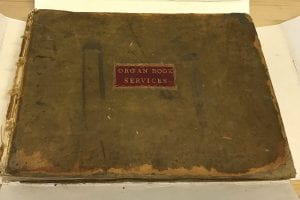
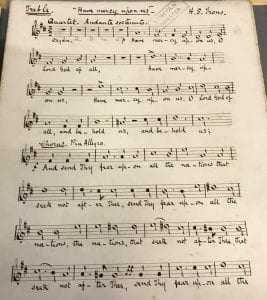
Needing to work with the collections directly, we had planned to have weekly project meetings in Exchequer Gate for the duration of the project. We had also hope to undertake research into the provenance and background of composers, pieces of music, and manuscripts at the University Library.


Megan and Valerie are both classically trained musicians with 30 years of theoretical, and orchestral experience between them. This will no doubt prove valuable in this research, especially when cataloguing, and providing descriptions for each score in detail.
Although we are disappointed with the delay, we remain hopeful for the future. The music manuscripts and printed music will still be safe in situ, Cecilia ready to include the resulting information, the project is ready to start and two keen students are raring to go. Covid 19 is all that is preventing this happening and the hope is that the students can complete this project next summer, after their hard work on the successful application.
There has been a choir at Lincoln Cathedral for more than nine centuries and 2020 would have been an ideal time to explore and disseminate information on the music collection. Hopefully the silencing of ‘Distant Music’ will only be temporary.
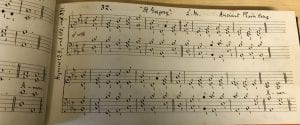
Music images courtesy of the Dean and Chapter of Lincoln Cathedral. Post written by Claire Arrand and Hope Williard.

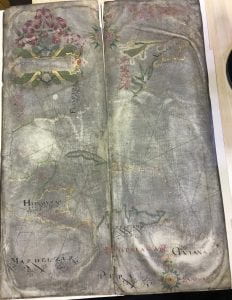
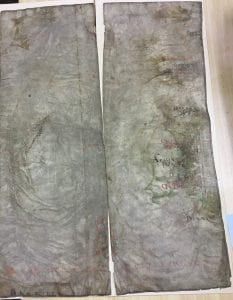
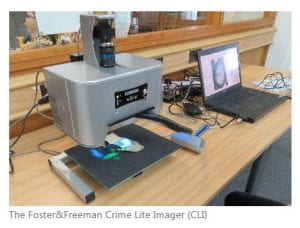
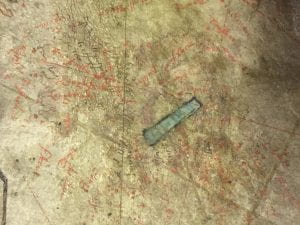 Normal photograph (actual size 1cm)
Normal photograph (actual size 1cm)